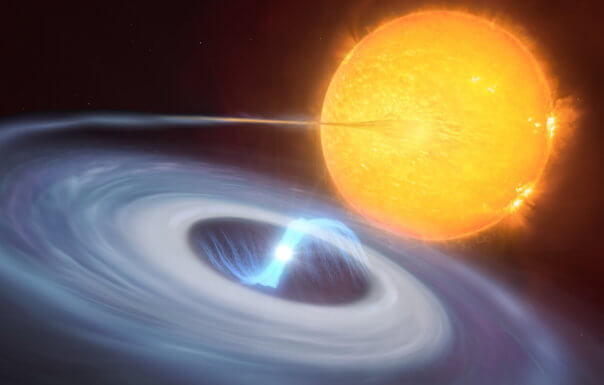What's a micronova? Astronomers discover a powerful new type of cosmic explosion!

This artist’s impression shows a two-star system where micronovae may occur. The blue disc swirling around the bright white dwarf in the centre of the image is made up of material, mostly hydrogen, stolen from its companion star. Towards the centre of the disc, the white dwarf uses its strong magnetic fields to funnel the hydrogen towards its poles. As the material falls on the hot surface of the star, it triggers a micronova explosion, contained by the magnetic fields at one of the white dwarf’s poles. (Credit: Durham University)
APRIL 20, 2022
by Study Finds
DURHAM, United Kingdom — Many astronomy fans probably know what a supernova is, but a new study is now revealing a new kind of stellar explosion — a micronova. Don’t let the name fool you, researchers say this cosmic eruption still burns through enough stellar dust to fill 3.5 billion Great Pyramids of Giza!
Astronomers spotted the phenomenon on the surface of three white dwarfs as they fed on hydrogen and other materials from their companion stars. White dwarfs are the remnants of dead stars which have exhausted all of their fuel.
The explosions last for just a few hours, rapidly burning through huge amounts of stellar material. These events could be commonplace throughout the universe but are extremely difficult to observe. An international team stumbled on them after noticing a brief, bright, flash of light while analyzing data from NASA’s Transiting Exoplanet Survey Satellite (TESS).
Two of the explosions took place on the surface of known white dwarfs. The third required more observations using an instrument on the European Southern Observatory’s (ESO) Very Large Telescope (VLT).
More:
https://www.studyfinds.org/micronova-cosmic-explosion/
